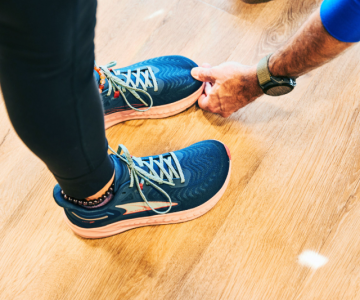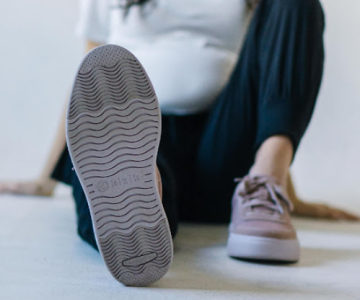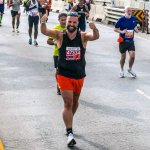As a runner, having the right shoes for each type of run is essential for both performance and injury prevention. Over the years, I’ve learned the importance of having a variety of shoes to suit different training needs. Building a running shoe rotation can be a game-changer for your training routine, allowing you to optimize your runs and protect your feet from overuse injuries.
What is a Running Shoe Rotation?
A running shoe rotation refers to using different pairs of shoes throughout the week, each designed for specific purposes. By rotating shoes, you give each pair a chance to recover, dry out, and maintain their cushioning properties. The added variety helps avoid repetitive stress on the same muscles, tendons, and joints, which can reduce the risk of injury.
Why Should You Consider a Shoe Rotation?
Running shoes, especially those with foam cushioning, lose their effectiveness after continuous use. The foam compresses with every run, and allowing shoes time to recover between uses can help them perform at their best for a longer period. Switching between different types of shoes encourages varied movements and can strengthen your feet, which is beneficial for injury prevention.
When you begin building your shoe rotation, it’s important to think about the types of runs you do most often. Each type of shoe serves a specific function, and incorporating a range of shoes into your routine can improve both your training efficiency and race-day performance.
Starting Your Shoe Rotation
The first step in building your rotation is to find a pair of shoes that suits your regular training needs. If you’re unsure of which shoe is best for you, visiting a specialized running store is a great place to start. They can conduct a gait analysis to evaluate your running mechanics and help you choose shoes that complement your natural stride.
Once you have your first pair, consider adding the following shoes to your rotation as your training progresses.
1. Daily Trainer – Neutral
For those with a neutral foot strike, a neutral daily trainer is a great starting point. These shoes offer excellent cushioning without affecting your natural gait. They are versatile, durable, and provide comfort for most of your runs. A good example is the Brooks Ghost MAX, which has a deep stack of cushioning and a rocker shape, promoting a smooth stride.
2. Daily Trainer – Support
If your gait analysis shows that you tend to overpronate (your foot rolls inward excessively), you’ll need a supportive shoe. Supportive shoes provide extra stability to control pronation and prevent injury. A popular option is the Saucony Guide 17, which uses high stack midsoles and a unique geometry to support overpronation without the need for traditional medial posts.
3. Racing Shoe
Adding a racing shoe to your rotation is a must if you’re looking to improve your performance. Racing shoes are lightweight and designed for speed, making them ideal for faster-paced training and race day. Models like the Nike Vaporfly and ASICS Metaspeed Sky Paris feature carbon plates, which add “spring” to your stride and improve energy return. These shoes are perfect for those who want to shave seconds off their race times.
4. Trail Shoe
For those who enjoy trail running, investing in a good pair of trail shoes is essential. These shoes offer extra grip and support for navigating uneven terrain, whether you’re running on dirt trails, gravel paths, or through muddy conditions. The Brooks Caldera 7 is a versatile trail shoe with excellent cushioning and traction, ideal for all types of off-road runs.
5. Tempo Shoe
Tempo shoes are designed for faster-paced runs that aren’t quite at race pace. They provide a nice balance between cushioning and responsiveness, making them perfect for interval training or tempo runs. The Brooks Hyperion Elite 4 and Nike ZoomX Streakfly are excellent options, offering a responsive ride and lightweight feel. These shoes are ideal for pushing yourself in high-intensity sessions.
6. Recovery Shoe (Optional)
While not essential, some runners like to include a recovery shoe in their rotation. These shoes are designed for easy runs or recovery days. They offer maximum cushioning to reduce impact on tired legs and help you recover after a hard workout. The New Balance 1080v13 is a great example of a recovery shoe with soft cushioning and a comfortable fit.
What’s Next for Your Rotation?
Once you’ve built a solid rotation, you might want to expand it further. Some runners opt for a second pair of trail shoes with specialized traction for wetter or more technical conditions. You can also consider shoes with Gore-Tex for waterproof options during rainy weather.
The variety in today’s running shoe market is impressive, with countless models offering unique features for every type of run. Whether you’re looking for performance shoes or simply a comfortable trainer, there’s no shortage of options available.
Conclusion
A well-structured running shoe rotation is an investment in your running longevity and performance. By rotating shoes that serve different purposes, you reduce the risk of injury, enhance your training, and improve your race-day performance. Experiment with different types of shoes to find the best rotation for your running style, and don’t forget to listen to your body as you adjust your footwear choices.





